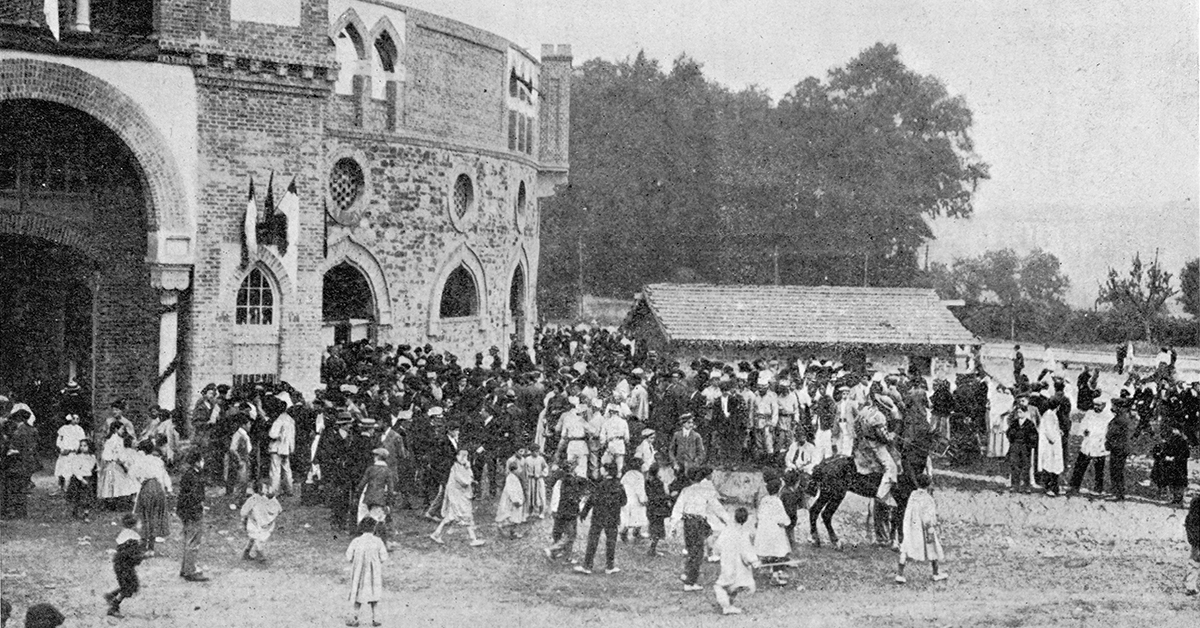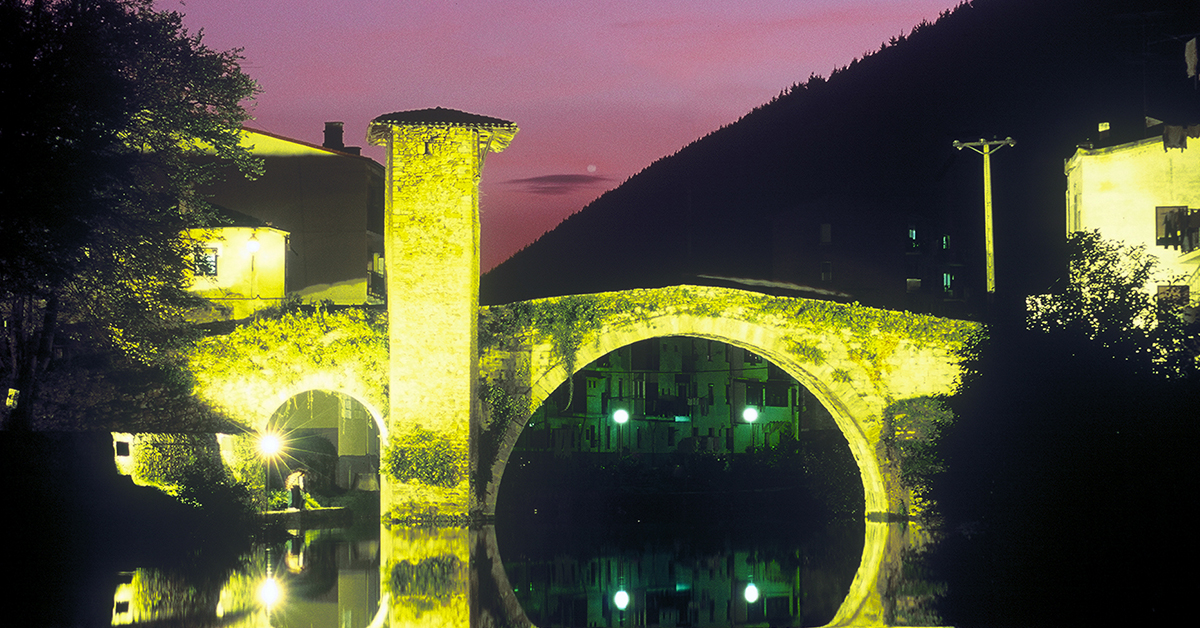Basque ethnography at a glance

Bobo and dancers. Danzas e indumentaria de Navarra [Dances and clothing of Navarre], by Francisco Arrarás.
The beautiful Pyrenean city of Ochagavía (Navarre) is located in the north of the Salazar Valley, and high above it, at an altitude of about 1025 m, the Sanctuary of Muskilda and its unique environs. Built in the 19th century and restored in the 17th, the Romanesque hermitage stands on top of the mountain of the same name, at the foot of the Irati Forest, a Gothic sculpture of the Virgin being preserved therewithin. (more…)

Inauguration of Indautxu Bullring in Bilbao. Novedades [Novelties], 1909. Euskal Biblioteka. Labayru Fundazioa.
It was 1892. José de Echevarría y Bengoa, an aristocrat, native of Bilbao, a well-known bull breeder and bullfight enthusiast, and sixth Marquis of Villagodio —a family title proudly held since 1764— bought 70 cows from the Duke of Veragua and 2 stallions from Jacinto Trespalacios. That is how his livestock farm in Coreses, near the Spanish town of Zamora, was founded. All well and good so far. (more…)
Due to the effects of the current pandemic, we are obliged to change our social practices, suspension or postponement of a vast majority of events having been announced. That does not, however, impair the popularity of the feast of James the apostle, customarily celebrated in villages throughout Bizkaia. Particularly worthy of mention among the numerous cultural and artistic manifestations for their choreographic aspect are the Ezpata-dantza, or sword dance, and the Aurresku soloist dance performed in Garai, as well as the time-honoured procession of the image of the saint, represented as the Moor-slayer. (more…)

Bermeo (Bizkaia), c. 1930. Indalecio Ojanguren. General Archive of Gipuzkoa.
Bermeo is a seaside city with nearly 17 000 inhabitants. Former caput Biscaiae ‘capital of Bizkaia’, the city was for centuries a major fishing and trading port.
Deep-sea trawler vessels of about 150 tonnes, each manned by some 15 fishermen from Bermeo, would leave the neighbouring city port of Ondarroa. They sailed through the Gulf of Bizkaia, as far as the Sole Bank, fishing for, among other species, hake (lebatza), monkfish (zapoa), bib (takarta)… Trawlers fished in small fleets of one, two or three, taking turns, if at all, to bring the catch back to shore. They stayed out at sea for as long as the caught fish would keep fresh, approximately 20 days, and embarked again after a couple of days off. (more…)


